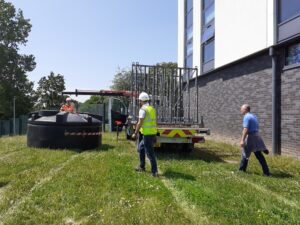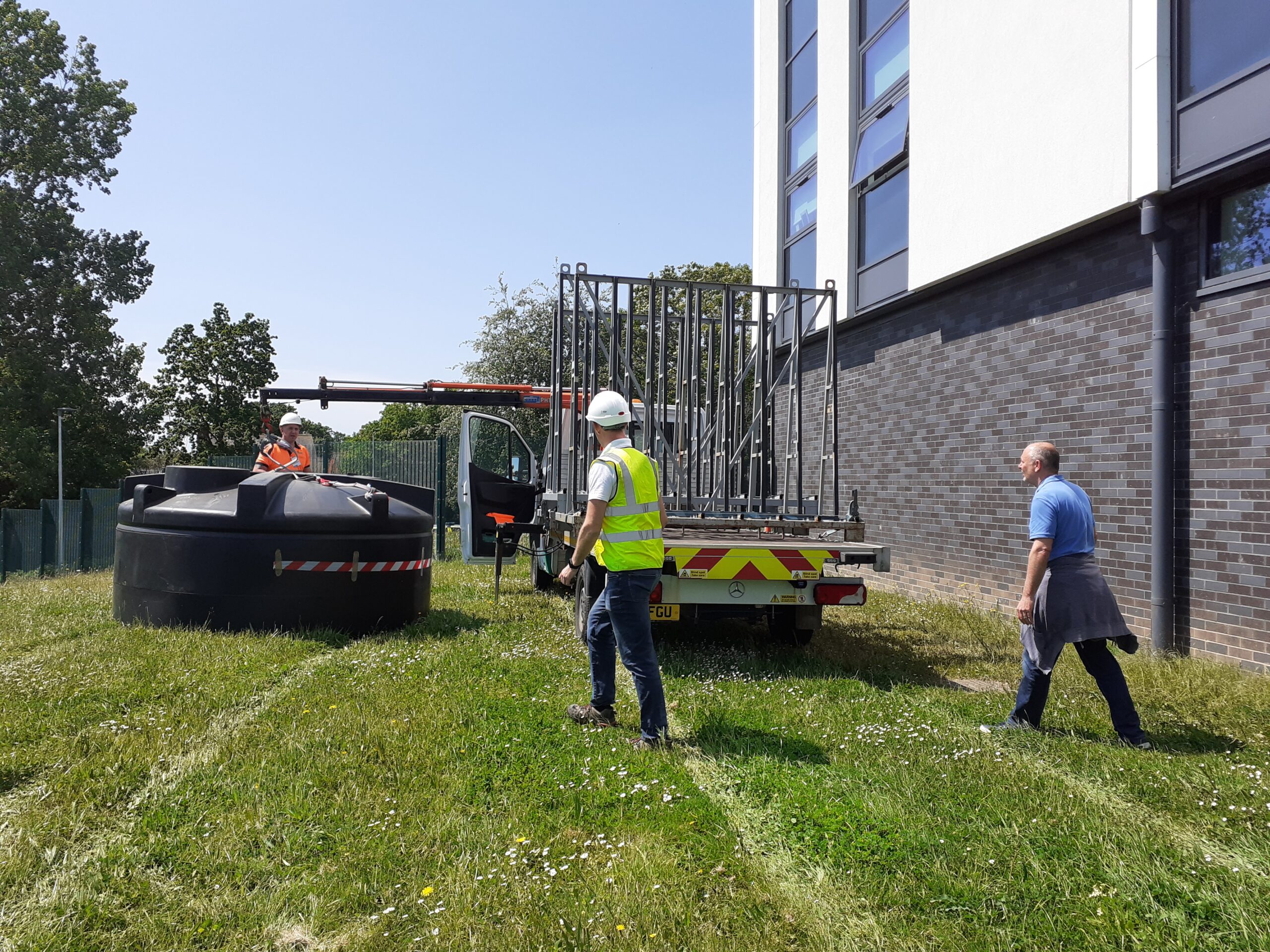SDS has installed a rainwater recovery system at new police headquarters in Exeter, one of several installations as part of the MOSL (Market Operator Services Ltd) “Market Improvement Fund” initiative to reuse water stored in pre-existing surface water attenuation tanks.
The Middlemoor HQ is the new operational home for up to 500 officers of Devon and Cornwall Police, whose duties range from community policing to major crime investigation, and sits within the top 10% of sustainable buildings in the country.
Rainwater from the roof collects in a pick-up chamber on entry into the attenuation system and is then pumped a short distance via filters to a 5,000 litre above-ground storage tank from where it is pumped to flush seven toilets in the gym area of the police building. Water consumption and corresponding savings, together with the efficient operation of the system, are continuously monitored and measured using SDS SYMBiotIC™ hardware and software.
 Since commissioning a few months ago, the system has already reused 22,800 litres of recovered rainwater in toilet flushing – replacing increasingly stressed sources from natural water abstraction and expensive, drinking quality tap water.
Since commissioning a few months ago, the system has already reused 22,800 litres of recovered rainwater in toilet flushing – replacing increasingly stressed sources from natural water abstraction and expensive, drinking quality tap water.
As part of the preparation for the system’s introduction a gully-sucker was used to clean out the pick-up chamber prior to recovering any water from there and a self-cleaning sand filter was installed to ensure clear, uncoloured water is delivered to the toilets. Of course, if installed as part of a new build scheme, any potential issues with silt, filtration and pumping would be avoided by drawing water from a settled tank rather than a repurposed silt catchpit.
The attenuation tank is located a short distance from the toilet block, with the pipe going through soft ground to the filters and tank, so the system was installed in less than two weeks. By recovering water from an attenuation system, it is possible for above-ground storage tanks to be sited away from buildings and downpipes, thereby offering greater flexibility in their location.
Although first and foremost a water conservation project, systems such as this can still help to reduce downstream flows of surface water and prevent flooding. Their capacity for retrofitting to many buildings and developments where a below-ground attenuation tank already exists can have a significant impact on combating water scarcity and mitigating against drought.





